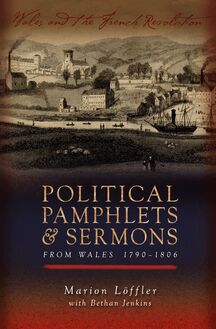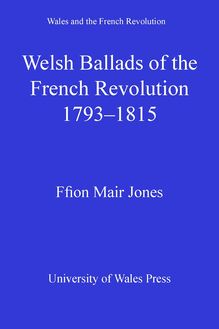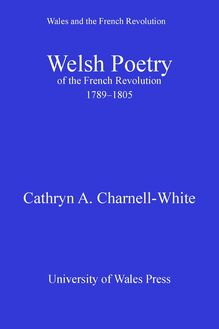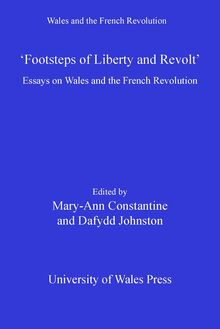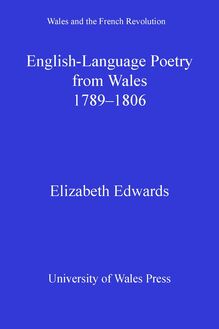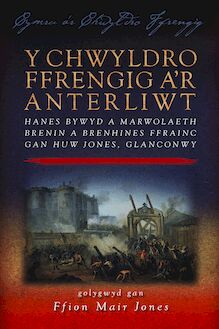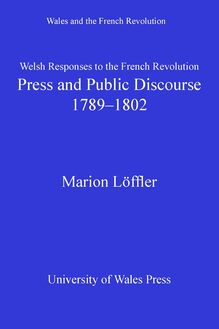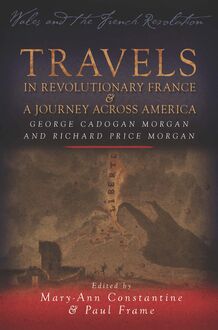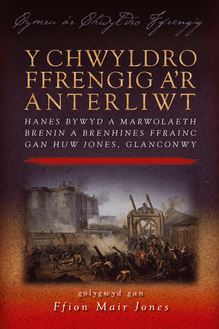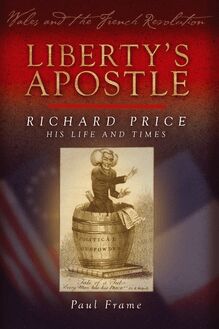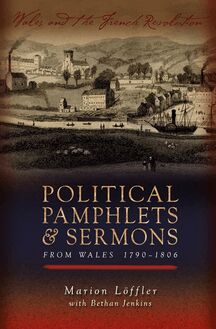-
 Univers
Univers
-
 Ebooks
Ebooks
-
 Livres audio
Livres audio
-
 Presse
Presse
-
 Podcasts
Podcasts
-
 BD
BD
-
 Documents
Documents
-
- Cours
- Révisions
- Ressources pédagogiques
- Sciences de l’éducation
- Manuels scolaires
- Langues
- Travaux de classe
- Annales de BEP
- Etudes supérieures
- Maternelle et primaire
- Fiches de lecture
- Orientation scolaire
- Méthodologie
- Corrigés de devoir
- Annales d’examens et concours
- Annales du bac
- Annales du brevet
- Rapports de stage
La lecture à portée de main
Vous pourrez modifier la taille du texte de cet ouvrage
Découvre YouScribe en t'inscrivant gratuitement
Je m'inscrisDécouvre YouScribe en t'inscrivant gratuitement
Je m'inscrisEn savoir plus
Vous pourrez modifier la taille du texte de cet ouvrage
En savoir plus

Description
Sujets
Informations
| Publié par | University of Wales Press |
| Date de parution | 15 avril 2013 |
| Nombre de lectures | 0 |
| EAN13 | 9781783160433 |
| Langue | English |
| Poids de l'ouvrage | 4 Mo |
Informations légales : prix de location à la page 0,0650€. Cette information est donnée uniquement à titre indicatif conformément à la législation en vigueur.
Extrait
WALES AND THE FRENCH REVOLUTION
General Editors: Mary-Ann Constantine and Dafydd Johnston
‘A Fishguard Fencible’, 1797, artist unknown
© The Contributors, 2013
All rights reserved. No part of this book may be reproduced in any material form (including photocopying or storing it in any medium by electronic means and whether or not transiently or incidentally to some other use of this publication) without the written permission of the copyright owner except in accordance with the provisions of the Copyright, Designs and Patents Act 1988. Applications for the copyright owner’s written permission to reproduce any part of this publication should be addressed to The University of Wales Press, 10 Columbus Walk, Brigantine Place, Cardiff CF10 4UP.
www.uwp.co.uk
British Library Cataloguing-in-Publication Data A catalogue record for this book is available from the British Library.
ISBN 978-0-7083-2590-2 e-ISBN 978-1-78316-043-3
The rights of the Contributors to be identified as authors of this work have been asserted by them in accordance with sections 77, 78 and 79 of the Copyright, Designs and Patents Act 1988.
Typeset in Wales by Eira Fenn Gaunt, Cardiff Printed by CPI Antony Rowe, Chippenham, Wiltshire
‘We are generally dismissed with loud applause and with the cry of “Vive la Nation. Toujours le tiers État!” … We were stop’d by similar inquiries, and as we travers’d along we found that we did not outrun the footsteps of Liberty and Revolt.’
George Cadogan Morgan, France, July 1789
WALES AND THE FRENCH REVOLUTION
The French Revolution of 1789 was perhaps the defining event of the Romantic period in Europe. It unsettled not only the ordering of society but language and thought itself: its effects were profoundly cultural, and they were long-lasting. The last twenty years have radically altered our understanding of the impact of the Revolution and its aftermath on British culture. In literature, as critical attention has shifted from a handful of major poets to the non-canonical edges, we can now see how the works of women writers, self-educated authors, radical pamphleteers, prophets and loyalist propagandists both shaped and were shaped by the language and ideas of the period. Yet surprising gaps remain, and even recent studies of the ‘British’ reaction to the Revolution remain poorly informed about responses from the regions. In literary and historical discussions of the so-called ‘four nations’ of Britain, Wales has been virtually invisible; many researchers working in this period are unaware of the kinds of sources available for comparative study.
The Wales and the French Revolution Series is the product of a four-year project funded by the AHRC and the University of Wales at the Centre for Advanced Welsh and Celtic Studies. It makes available a wide range of Welsh material from the decades spanning the Revolution and the subsequent wars with France. Each volume, edited by an expert in the field, presents a collection of texts (including, where relevant, translations) from a particular genre with a critical essay situating the material in its historical and literary context. A great deal of material is published here for the first time, and all kinds of genres are explored. From ballads and pamphlets to personal letters and prize-winning poems, essays, journals, sermons, songs and satires, the range of texts covered by this series is a stimulating reflection of the political and cultural complexity of the time. We hope these volumes will encourage scholars and students of Welsh history and literature to rediscover this fascinating period, and will offer ample comparative scope for those working further afield.
Mary-Ann Constantine and Dafydd Johnston General Editors
Contents
List of Figures List of Contributors Preface Acknowledgements List of Abbreviations
1 Introduction: Writing the Revolution in Wales Mary-Ann Constantine and Dafydd Johnston
2 Wales as Nowhere: the tabula rasa of the ‘Jacobin’ imagination Caroline Franklin
3 Rousseau and Wales Heather Williams
4 ‘Our first concern as lovers of our country must be to enlighten it’: Richard Price’s response to the French Revolution Paul Frame and Geoffrey W. Powell
5 The Welsh in Revolutionary Paris Mary-Ann Constantine
6 The ‘Marseillaise’ in Wales Marion Löffler
7 The ‘Rural Voltaire’ and the ‘French madcaps’ Geraint H. Jenkins
8 Networking the nation: the bardic and correspondence networks of Wales and London in the 1790s Cathryn A. Charnell-White
9 Radical adaptation: translations of medieval Welsh poetry in the 1790s Dafydd Johnston
10 ‘Brave Republicans’: representing the Revolution in a Welsh interlude Ffion Mair Jones
11 ‘A good Cambrio-Briton’: Hester Thrale Piozzi, Helen Maria Williams and the Welsh sublime in the 1790s Jon Mee
12 What is a national Gothic? Murray Pittock
13 Terror, treason and tourism: the French in Pembrokeshire 1797 Hywel M. Davies
14 The voices of war: poetry from Wales 1794–1804 Elizabeth Edwards
15 The Revd William Howels (1778–1832) of Cowbridge and London: the making of an anti-radical Stephen K. Roberts
Figures
Frontispiece: ‘A Fishguard Fencible’, 1797, artist unknown
Fig. 1 ‘Hafod House (1810)’, engraving by Joseph C. Stadler, after a painting by John ‘Warwick’ Smith
Fig. 2 ‘Richard Price, D.D. F.R.S.’, engraving by Thomas Holloway, 1793, after a painting by Benjamin West
Fig. 3 Map: Revolutionary Paris
Fig. 4 David Samwell, 1798. A ‘physionotrace’ portrait taken in Paris by Gilles-Louis Chrétien
Fig. 5 ‘Marche des Marseillois’, published in London in 1792
Fig. 6 ‘A Sketch of the Life of William Jones’. Unattributed engraving from Cambrian Register, II (1799)
Fig. 7 John Jones (Jac Glan-y-gors), from frontispiece to 1923 edition of Seren Tan Gwmmwl
Fig. 8 ‘Mrs Piozzi’, engraving by Thomas Holloway, 1786, after a painting of 1781 by Robert Edge Pine
Fig. 9 Detail from ‘A Plan of Fishguard Bay’ by Thomas Propert, 1798
Fig. 10 Portrait of William Howels by Thomas Overton, signed by Howels. Published as frontispiece to Sermons … by the Late Rev.William Howels (London, 1836)
Contributors
Dr Cathryn A. Charnell-White , Research Fellow, University of Wales Centre for Advanced Welsh and Celtic Studies
Dr Mary-Ann Constantine , Senior Research Fellow, University of Wales Centre for Advanced Welsh and Celtic Studies
Dr Hywel M. Davies , Director of Recruitment and Admissions, Aberystwyth University
Dr Elizabeth Edwards , Research Fellow, University of Wales Centre for Advanced Welsh and Celtic Studies
Mr Paul Frame , Independent Researcher, Swansea
Professor Caroline Franklin , Professor of English Literature, Swansea University
Professor Geraint H. Jenkins , Emeritus Professor and Former Director, University of Wales Centre for Advanced Welsh and Celtic Studies
Professor Dafydd Johnston , Director, University of Wales Centre for Advanced Welsh and Celtic Studies
Dr Ffion Mair Jones , Research Fellow, University of Wales Centre for Advanced Welsh and Celtic Studies
Dr Marion Löffler , Research Fellow, University of Wales Centre for Advanced Welsh and Celtic Studies
Professor Jon Mee , Professor of Romanticism Studies, University of Warwick
Professor Murray Pittock , Bradley Professor of English Literature and Vice-Principal, University of Glasgow
Mr Geoffrey W. Powell , Formerly Lecturer in Education, Keele University, and Tutor in Philosophy, Coleg Harlech
Dr Stephen K. Roberts , Editor, House of Commons 1640–1660, History of Parliament Trust, London
Dr Heather Williams , Research Fellow, University of Wales Centre for Advanced Welsh and Celtic Studies
Preface
This collection of essays comes out of a four-year research project at the University of Wales Centre for Advanced Welsh and Celtic Studies, which set out to explore the impact of the French Revolution and the subsequent wars with France on the culture of Wales. A range of fascinating texts is being published as part of the Wales and the French Revolution Series, which is discussed further in the Introduction below. This volume, however, is devoted to consideration of some of the broader themes of the period, and to many of the extraordinary people who played their part in shaping perceptions of Wales’s place within Britain, Europe and the wider world.
The image on the cover of the volume is a water-colour study made by the twenty-three year old J. M. W. Turner on a seven-week tour of north Wales in 1798. From its alarming, weirdly lit mass of shapes and colours emerge, with a little concentration, the bulk of Caernarfon castle, troubling symbol of defence (against whom?) in times of war, and the skewed masts of ships, linking Wales to the conflict on the seas. The pull of the picture is both back into history and outwards into current affairs: both past and present are challenging and bloody. That complex pulling and meshing of different loyalties with and against new and inherited identities (Welsh, British, ‘Citizen of the World’, republican, Dissenter, loyalist, Volunteer) is explored, in a variety of different contexts, in the contributions published here.
We are hugely grateful to all our authors, therefore, and to the people and institutions that have made the work possible. The AHRC and the University of Wales have between them funded four years of intense research; the National Library of Wales, repository of many of the period’s most interesting texts, has been a pleasant second home to many of us. We are especially grateful to the Library for the use of several images in this volume, and to Tom Lloyd and Martin Crampin for the delightful ‘Fishguard Fencible’ who guards the entrance to this book. Thanks go also to the director and staff of the University of Wales Press for their enthusiasm and practical support for this project from the very beginning. Members of our Advisory Pan
-
 Univers
Univers
-
 Ebooks
Ebooks
-
 Livres audio
Livres audio
-
 Presse
Presse
-
 Podcasts
Podcasts
-
 BD
BD
-
 Documents
Documents
-
Jeunesse
-
Littérature
-
Ressources professionnelles
-
Santé et bien-être
-
Savoirs
-
Education
-
Loisirs et hobbies
-
Art, musique et cinéma
-
Actualité et débat de société
-
Jeunesse
-
Littérature
-
Ressources professionnelles
-
Santé et bien-être
-
Savoirs
-
Education
-
Loisirs et hobbies
-
Art, musique et cinéma
-
Actualité et débat de société
-
Actualités
-
Lifestyle
-
Presse jeunesse
-
Presse professionnelle
-
Pratique
-
Presse sportive
-
Presse internationale
-
Culture & Médias
-
Action et Aventures
-
Science-fiction et Fantasy
-
Société
-
Jeunesse
-
Littérature
-
Ressources professionnelles
-
Santé et bien-être
-
Savoirs
-
Education
-
Loisirs et hobbies
-
Art, musique et cinéma
-
Actualité et débat de société
- Cours
- Révisions
- Ressources pédagogiques
- Sciences de l’éducation
- Manuels scolaires
- Langues
- Travaux de classe
- Annales de BEP
- Etudes supérieures
- Maternelle et primaire
- Fiches de lecture
- Orientation scolaire
- Méthodologie
- Corrigés de devoir
- Annales d’examens et concours
- Annales du bac
- Annales du brevet
- Rapports de stage
